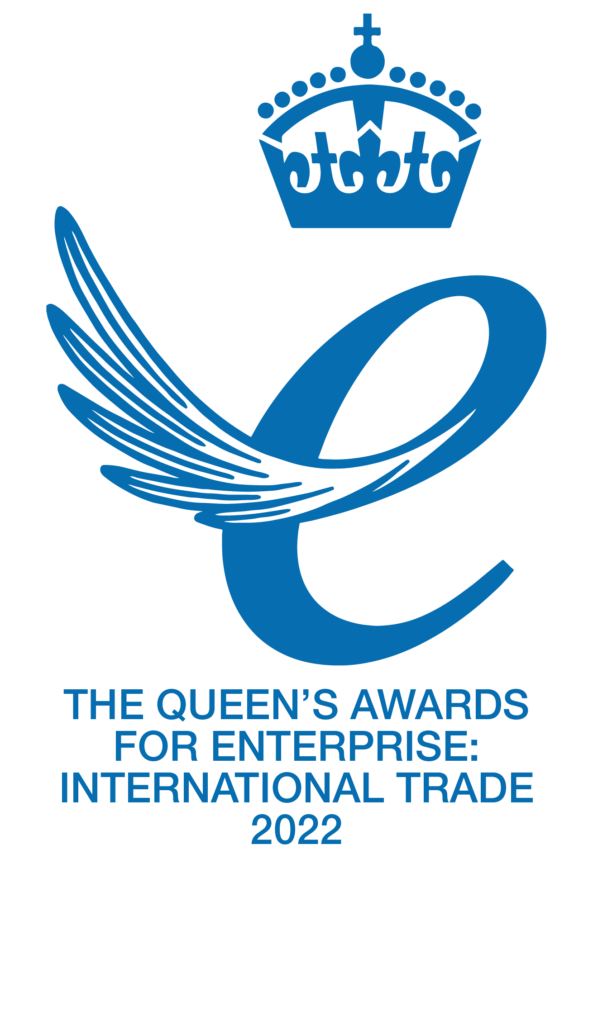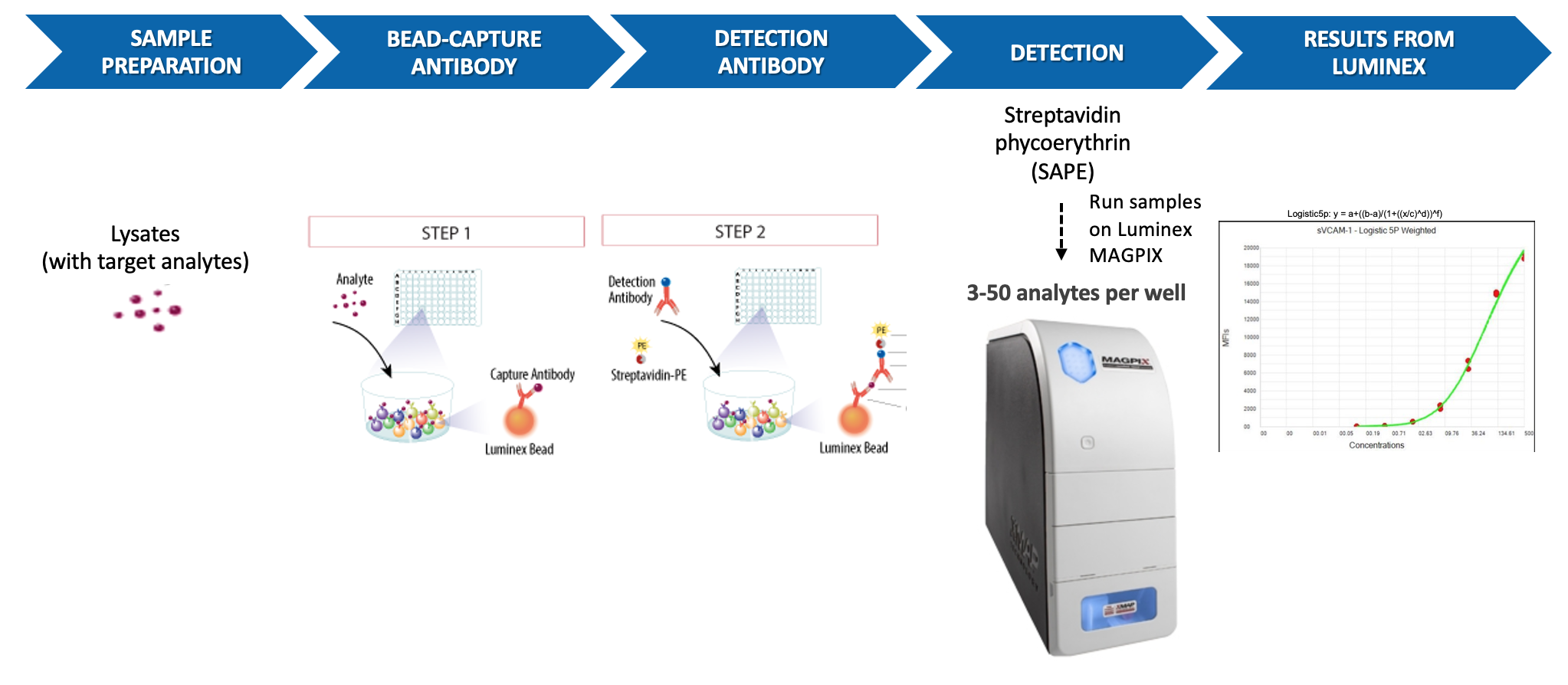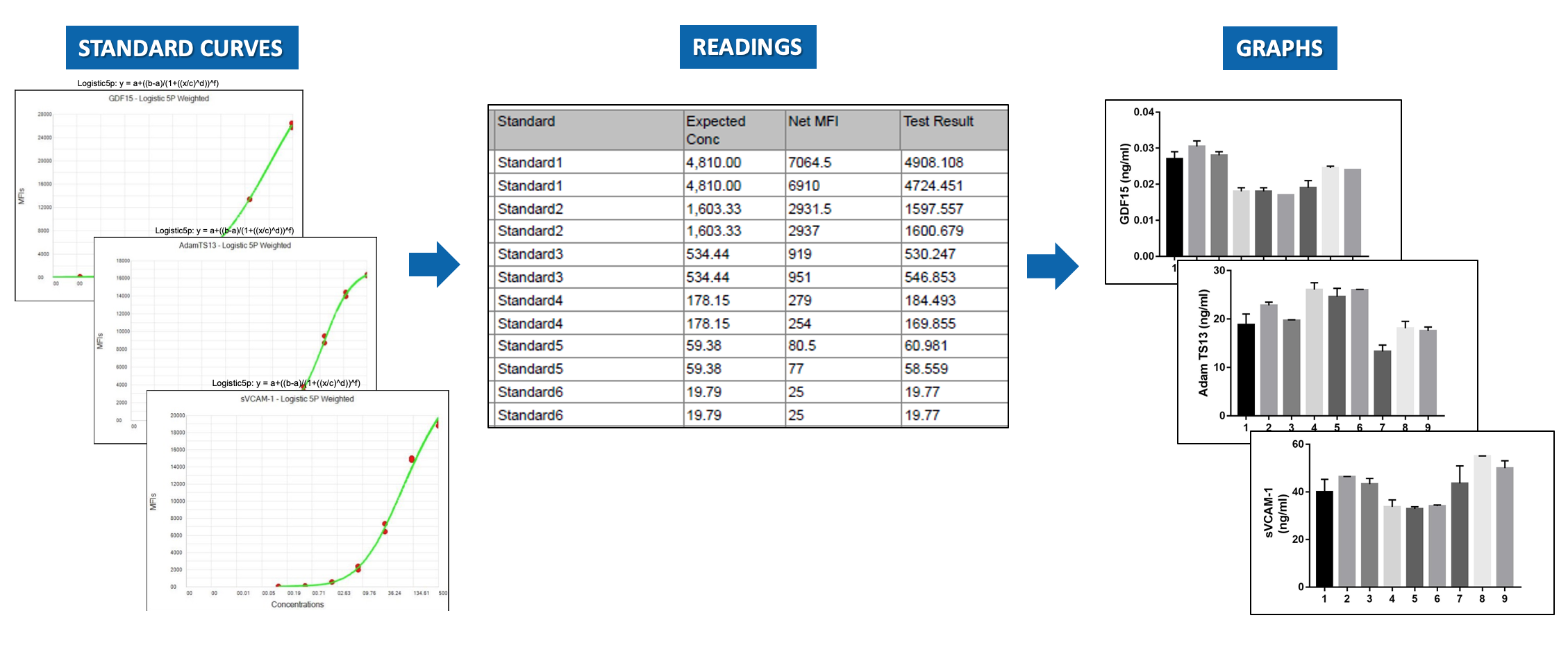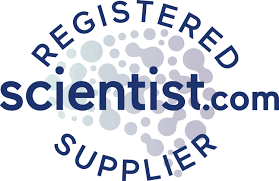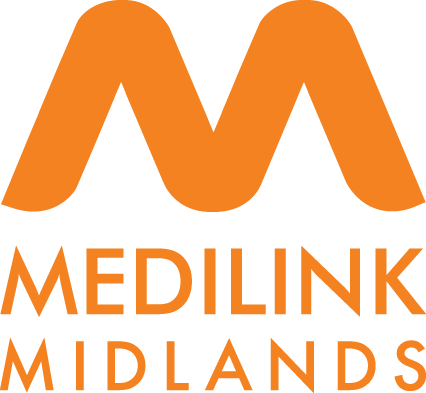Immunoassays
Immunoassays are bioanalytical methods used in drug discovery that use the specificity of an antigen-antibody reaction to detect and quantify target molecules in biological samples.
For more information on how Cellomatics Biosciences can assist with your immunoassays, please contact us or request a consultation.
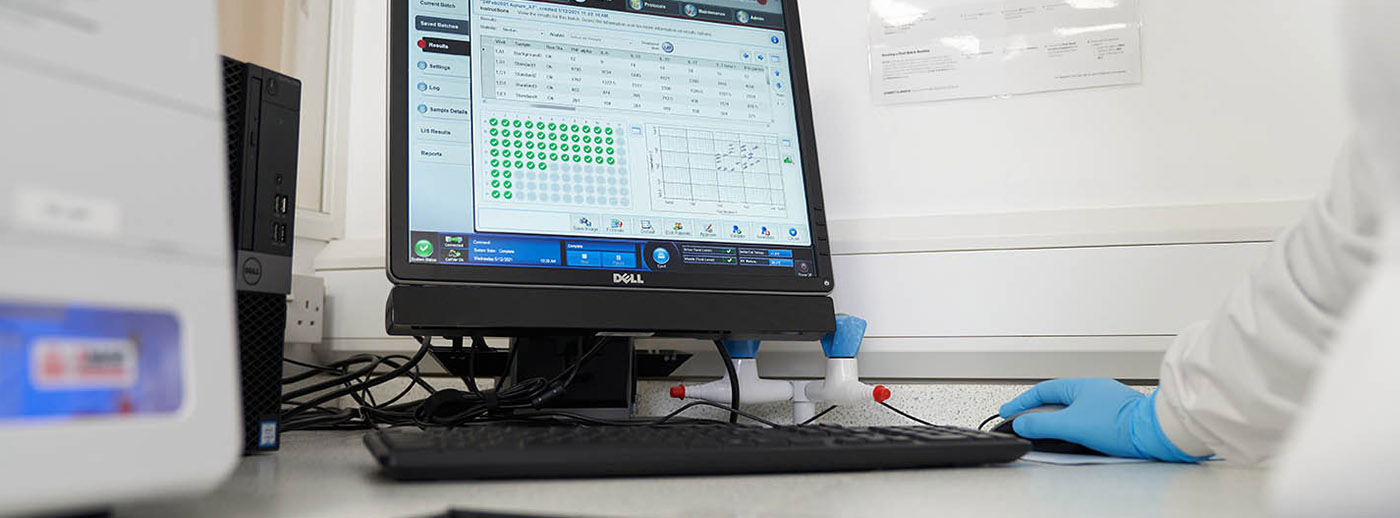
Luminex Multiplex
xMAP Technology has application in serological assays by easy detection of antibodies. A serology assay enables the detection of an antibody (target) with the use of a capture protein antigen attached to the surface of a microsphere. A detection antibody that incorporates a fluorescent label is used to quantify the amount of target antibody present. This assay is useful when serum antibodies need to be measured, such as for the response to a vaccine, allergic reactions, or autoantibody detection.
It combines the efficiency and sensitivity of traditional ELISAs with high through-put capacity, small sample volume, efficiency in terms of time and cost,high reproducibility and sensitivity and analyte quantification over a wide range of concentrations.

Applications:
- Measurement of cytokine/chemokine/inflammatory mediator expression in a variety of biological specimens which can be applied for biomarker discovery and Target validation
- Allergy testing
- Single nucleotide polymorphisms (SNPs) testing
- Diagnosis of infectious diseases
- Application areas include inflammation, autoimmune diseases, asthma, obesity/diabetes, neurological disorders, cancer, cardiovascular disease, drug discovery and vaccine development

Biomarker qualification and validation:
- Robust validated technology
- Simultaneous detection and quantification of multiple analytes in a single sample from a variety of biological specimens
- High sensitivity and reproducibility
- High through-put capacity
- Efficiency in terms of time and cost
- Various species
Multiplex Analysis-Serum
Serum samples from 9 healthy volunteers were analysed for GDF1, Adam TS13 and sVAM-1 using Luminex Multiplex assay. Standard curves and median fluorescent intensities (MFIs) are extracted from the Luminex MAGPix instrument. The Exponent software (Luminex) analyses the MFIs for each sample and concentrations are calculated from the standard curves. These concentrations are then graphed on GraphPad Prism.
Biomarker Analysis
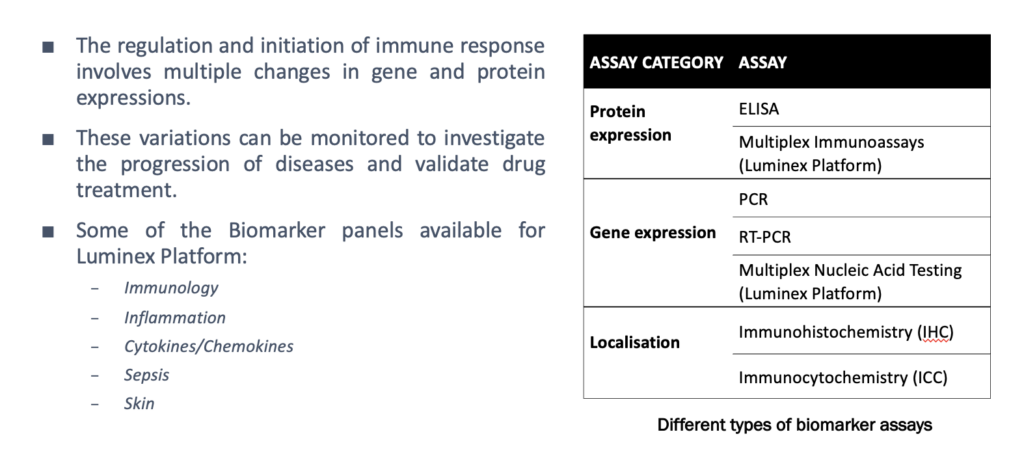
Immunology/Inflammation Assays
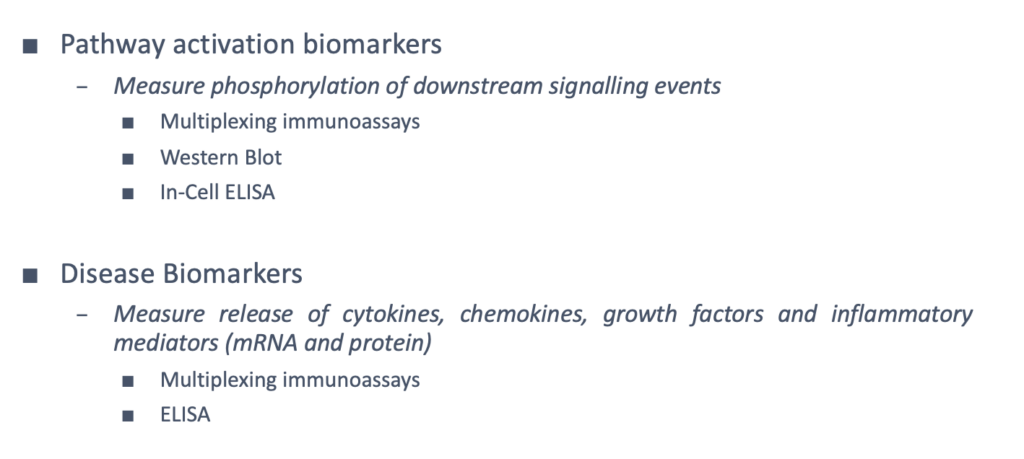
| No | Plex | Assay Panel | Description |
|---|---|---|---|
| 1 | 41-plex | Human Cytokine/Chemokine Panel I | sCD40L, EGF, Eotaxin/CCL11, FGF-2, Flt-3 ligand, Fractalkine, G-CSF, GM-CSF, GRO, IFN-α2, IFN-γ, IL-1α, IL-1β, IL-1ra, IL-2, IL-3, IL-4, IL-5, IL-6, IL-7, IL-8, IL-9, IL-10, IL-12 (p40), IL-12 (p70), IL-13, IL-15, IL-17, IP-10, MCP-1, MCP-3, MDC (CCL22), MIP-1α, MIP-1β, PDGF-AA, PDGF-AB/BB, RANTES, TGF-α, TNF-α, TNF-β, VEGF |
| 2 | 29-plex | Human Cytokine/Chemokine Panel II | EGF, G-CSF, GM-CSF, IFN-α2, IFN-γ, IL-1α, IL-1β, IL-1ra, IL-2, IL-3, IL-4, IL-5, IL-6, IL-7, IL-8, IL-10, IL-12 (p40), IL-12 (p70), IL-13, IL-15, IL-17, IP-10, MCP-1, MIP-1α, MIP-1β, TNF-α, TNF-β, VEGF, Eotaxin/CCL11 |
| 3 | 23-plex | Human Cytokine/Chemokine Panel III | 6Ckine, BCA-1, CTACK, ENA-78, Eotaxin-2, Eotaxin-3, I-309, IL-16, IL-20, IL-21, IL-23, IL-28A, IL-33, LIF, MCP-2, MCP-4, MIP-1d, SCF, SDF-1A+β, TARC, TPO, TRAIL, TSLP |
| 4 | 25-plex | Human Th17 Panel | GM-CSF, IFN-γ, IL-1β, IL-2, IL-4, IL-5, IL-6, IL-9, IL-10, IL-12 (p70), IL-13, IL-15, IL-17A, IL-17F, IL-17E/IL-25, IL-21, IL-22, IL-23, IL-27, IL-28A, IL-31, IL-33, MIP-3α/CCL20, TNF-α, TNFβ |
| 5 | 5-plex | Human Diabetes Panel | Insulin, Glucagon, Leptin, GLP-1 (Active), C-Peptide |
| 6 | 11-plex | Human Kidney Injury Panel | Calbindin, Collagen IV, FABP1, GSTα, GSTπ, IP-10, KIM-1, Osteoactivin, Renin, TFF-3, TIMP-1 |
| 7 | 8-plex | Human Src Family Kinase Panel – Phosphoprotein | Blk (Tyr389), Fgr (Tyr412), Fyn (Tyr420), Hck (Tyr411), Lck (Tyr394), Lyn (Tyr397), Src (Tyr419), Yes (Tyr421) |
| 8 | 17-plex | Human Angiogenesis/Growth Factor Panel | Angiopoietin-2, BMP-9, EGF, Endoglin, Endothelin-1, FGF-1, FGF-2, Follistatin, G-CSF, HB-EGF, HGF, IL-8, Leptin, PLGF, VEGF-A, VEGF-C, VEGF-D |
| 9 | 7-plex | DNA Damage/Genotoxicity Panel | ATR (Total), Chk1 (Ser345), Chk2 (Thr68), H2A.X (Ser139), MDM2 (total), p21 (Total), p53 (Ser15) |
| 10 | 6-plex | Human Apolipoprotein Panel | Apo AI, Apo AII, Apo B, Apo CII, Apo CIII, Apo E |
| 11 | 12-plex | Human Bone Metabolism Panel | ACTH, DKK-1, FGF-23, IL-1β, IL-6, Insulin, Leptin, Osteocalcin, OPN – Osteopontin, Osteoprotegerin, PTH, SOST, TNF-α |
| 12 | 9-plex | Human Cancer/ Metastasis Biomarker Panel | DKK-1, GDF-15, NSE, OPG, Osteonectin (SPARC), Periostin, TRAP5, TWEAK, YKL40 |
| 13 | 10-plex | Human Cardiovascular Disease (CVD) Panel 1 | ADAMTS13, D-Dimer, GDF-15, Myoglobin, sICAM-1, MPO, P-selectin, Lipocalin-2/NGAL, sVCAM-1, SAA. |
| 14 | 14-plex | Human Cardiovascular Disease (Acute Phase) Panel 2 | AGP, Haptoglobin, SAP, Adipsin, Human a2, CRP, Fetuin, Fibrinogen, L-Selectin, PF4, vonWillebrand Factor |
| 15 | 24-plex | Human Circulating Cancer Biomarker Panel I | AFP, CEA, CYFRA21-1, FGF-2, HE4, PSA Total, PSA free, HGF, IL-6, IL-8, Leptin, MIF, OPN – Osteopontin, Prolactin, SCF, sFas, sFasL, TGF-α, TNF-α, TRAIL, VEGF, CA125, CA15-3, CA19-9, β-HCG |
| 16 | 5-plex | Human Circulating Cancer Biomarker Panel 2 | Antithrombin III, Complement Factor H, Extracellular Matrix Protein 1, Vitamin D Binding Protein, Vitronectin |
| 17 | 7-plex | Human Early Apoptosis Panel | Akt (Ser473), BAD (Ser112), Bcl-2 (Ser70), Active Caspase 8 (Asp384), Active Caspase 9 (Asp315), JNK (Thr183/Tyr185), p53 (Ser46) |
| 18 | 11-plex | Human Kidney Injury Panel 1 | Calbindin, Collagen IV, FABP1, GSTα, GSTπ, IP-10, KIM-1, Osteoactivin, Renin, TFF-3, TIMP-1 |
| 19 | 7-plex | Human Kidney Injury Panel 2 | α-1-Microglobulin, Albumin, Clusterin, Cystatin C, EGF, Lipocalin-2/NGAL, Osteopontin (OPN) |
| 21 | 13-plex | Human Metabolic Hormone Panel | Amylin (Total), Amylin (Active), C-Peptide, Ghrelin, GIP, GLP-1 (Active), GLP-1 (Total), Glucagon, IL-6, Insulin, Leptin, MCP-1, PP, PYY, TNF-α |
| 20 | 9-plex | Human Liver Protein Panel – Metabolism | AFP, ANGPTL3, ANGPTL4, ANGPTL6/AGF, FABP1, FGF-19, FGF-21, FGF-23, HGF |
| 21 | 13-plex | Human Metabolic Hormone Panel | Amylin (Total), Amylin (Active), C-Peptide, Ghrelin, GIP, GLP-1 (Active), GLP-1 (Total), Glucagon, IL-6, Insulin, Leptin, MCP-1, PP, PYY, TNF-α |
| 22 | 14-plex | Human Soluble Cytokine Receptor Panel | sCD30, sEGFR, sgp130, sIL-1RI, sIL-1RII, sIL-2Rα, sIL-4R, sIL-6R, sRAGE, sTNFRI, sTNFRII, sVEGF-R1, sVEGF-R2, sVEGF-R3 |
| 23 | 7-plex | T-Cell Receptor Signaling Panel | CD3ε (pan Tyr), CREB (S133), ERK (Thr185/Tyr187), LAT (pan Tyr), Lck (pan Tyr), Syk (pan Tyr), ZAP-70 (pan Tyr) |
| 24 | 5-plex | Human Neurodegenerative Disease Panel | Human Neurodegenerative Disease Panel |
| 25 | 3-plex | Human Sepsis Panel | FGF-13, Olfactomedin-4 (OLFM-4), MMP-8 |
| 26 | 7-plex | Human Skin Immune Response Panel | Cortisol, HSA, Fibronectin, LPS, Involucrin, Keratin-6, Keratin-1,10 |
| 27 | 13-plex | Human High Sensitivity T Cell Panel | GM-CSF, IFNγ, IL-1β, IL-2, IL-4, IL-5, IL-6, IL-7, IL-8, IL-10, IL-12 (p70), IL-13, TNF-α |
| 28 | 7-plex | Total Mitogenesis RTK Panel | EGFR (Total), ErbB2/HER2 (Total), ErbB3/HER3 (Total), ErbB4/HER4 (Total), IR (total), c-Met/HGFR (Total), IGF-1R (Total) |
| 29 | 9-plex | Multi-Pathway Total Cell Signaling Panel | Erk/MAPK 1/2 (Total), Akt (Total), STAT3 (Total), JNK (Total), p70 S6 Kinase (Total), NFκB (Total), STAT5A/B (Total), CREB (Total), p38 (Total) |
| 30 | 5-plex | Human Oxidative Stress Magnetic Bead Panel – Cellular Metabolism Multiplex Assay | Catalase, PRX2, SOD1, SOD2, TRX1 |
ELISA
ELISA (enzyme-linked immunosorbent assay) is a plate-based assay technique designed for detecting and quantifying soluble substances such as peptides, proteins, antibodies, and hormones.
Serum samples from 4 patients were collected three days (pre, Day1 and Day7) and at two time points for Day 1 and Day7. The IL-17A levels in these samples were analysed using a commercially available ELISA kit.
Request a consultation with Cellomatics Biosciences today
Our experienced team of in vitro laboratory scientists will work with you to understand your cell-based assay development needs and provide a bespoke project plan with a professional, flexible service and a fast turnaround time.
To request a consultation where we can discuss your exact requirements, please contact Cellomatics Biosciences.


